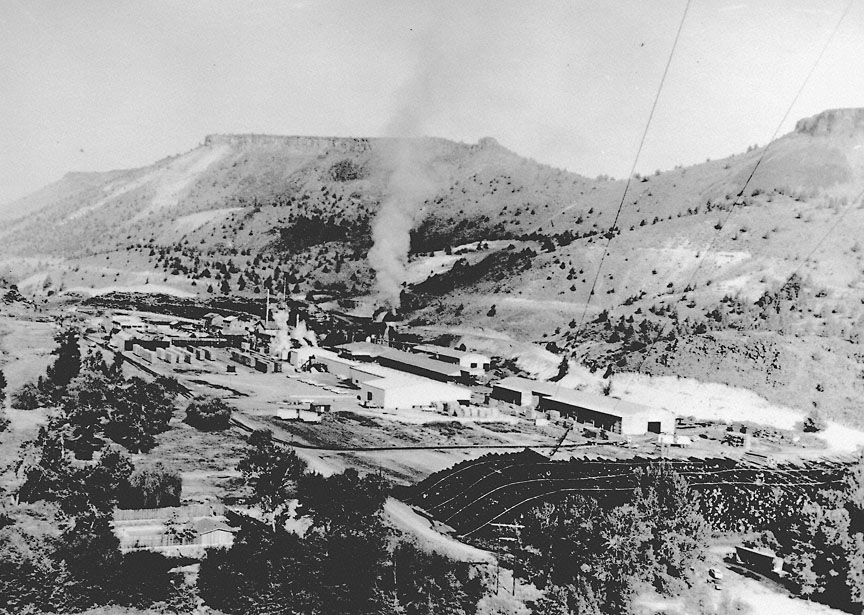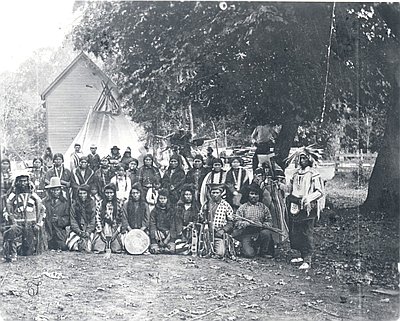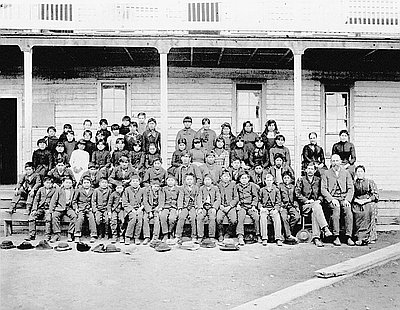- Catalog No. —
- CN 019512
- Date —
- May 2, 1969
- Era —
- 1950-1980 (New Economy, Civil Rights, and Environmentalism)
- Themes —
- Environment and Natural Resources, Native Americans, Trade, Business, Industry, and the Economy
- Credits —
- Oregon Historical Society
- Regions —
- Central
- Author —
- Jeff Sanders, Portland Magazine
Warm Springs Reservation Mill
In 1938, four years after the congressional passage of the Indian Reorganization Act, the Warm Springs tribes became officially incorporated as the Confederated Tribes of the Warm Springs Reservation. As a corporation, they effectively took directive control away from the U.S. Bureau of Indian Affairs and placed it in the hands of inhabitants of the reservation. In 1967, under the leadership of Warm Springs general manager Vernon Jackson, the tribal council approved the $1.25 million purchase of the Jefferson Plywood Company mill at Warm Springs and an additional $90,000 worth of plywood and veneer-making equipment from Sam Johnson, a state legislator from Redmond. Management of the mill was assigned to the newly-formed tribal subsidiary, Warm Springs Forest Products Industries (WSFPI), which was responsible for managing the logging and processing of 81 million board feet of reservation timber per year.
Because the mill was purchased to improve economic conditions for the people of the Warm Springs Reservation, hiring preference was given first to Warm Springs members, second to Native Americans in general, third to non-Indians married to Warm Springs members, and fourth to non-affiliated non-Indians. The availability of on-site training provided tribal members with a way to learn new skills and develop management experience.
In 1968, operations were expanded with the addition of a stud mill. Five years later, WSFPI bought three used power generators from Alaska. When used in conjunction with the 1,200 kw steam-powered generator already on site, the additional generators satisfied all of the mill’s power needs, saving WSFPI approximately $600,000 per year.
In recent years, reductions in the available harvests from the forests of the Warm Springs Reservation have forced WSFPI to layoff the mill’s night shift. The reduction in trees processed at the mill has subsequently reduced the availability of wood waste used to power the mill, causing the firm to purchase power from outside sources once again. WSFPI is currently attempting to reinvigorate their operations by securing contracts with the U.S. Forest Service to thin unhealthy forests, using the collected biomass to feed their steam-powered generators for the production of electricity. According to Ralph Minnick, corporate financial officer of WSFPI, the collection of biomass “will help preserve our neighboring National Forests, in which Warm Springs has substantial trust, treaty, and cultural rights and interests.”
Further Reading:
Logan, Richard. Historical Perspectives: The Warm Springs Forest Through 1980. 1983.
Hunt, Jack. “Land Tenure and Economic Development on the Warm Springs Reservation.” Journal of the West 9, 1970: 93–109.
Written by Joshua Binus, © Oregon Historical Society, 2003.


